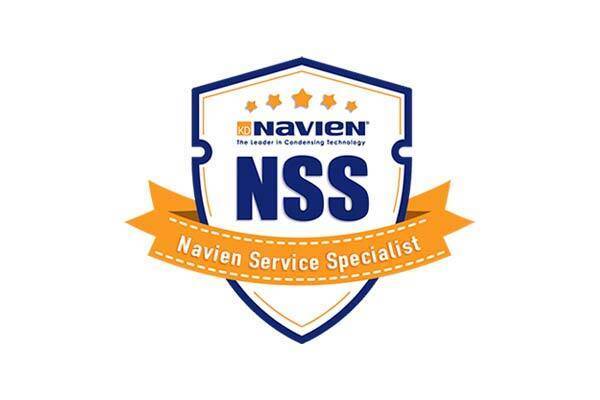Sewer Line Replacement in Houston
Determining when a sewer line requires replacement hinges on several factors, including the system’s age, the damage’s severity, and recurring issues. Older homes may have sewer lines made from materials prone to deterioration over time, such as cast iron or clay pipes, susceptible to corrosion and root intrusion. Signs such as frequent clogs, slow drains, or sewage backups indicate potential problems within the sewer line. Additionally, if the sewer line has experienced significant damage due to factors like ground shifting, tree root intrusion, or damage from construction work, it may necessitate replacement. Persistent issues despite attempted repairs indicate the need for a comprehensive solution, such as a complete sewer line replacement.
Furthermore, advancements in technology and materials have made modern sewer lines more durable and resistant to common issues. Homeowners experiencing frequent sewer line issues or costly repairs may opt for a proactive replacement to avoid ongoing inconvenience and expenses. Ultimately, consulting with a qualified plumber or sewer line specialist is crucial for accurately assessing the sewer line’s condition and determining whether replacement is the best action. At Nick’s Plumbing of Houston, our experienced team employs state-of-the-art techniques and equipment to evaluate sewer lines thoroughly, providing reliable recommendations tailored to each customer’s needs.
Can an Old Sewer Line Be Repaired?
Old sewer lines can often be repaired depending on the extent of the damage and the overall condition of the line. Several repair methods, such as trenchless sewer repair, pipe relining, and pipe bursting, offer practical solutions for addressing various issues without requiring extensive excavation. These methods can fix common problems like cracks, leaks, and root intrusion, restoring the functionality of the sewer line without the expense and disruption of complete replacement. However, the effectiveness of repairs depends on factors such as the material and condition of the existing sewer line, as well as the severity and location of the damage.
In some cases, especially if the sewer line is severely deteriorated or has sustained extensive damage, repair may not be a viable long-term solution. Old sewer lines made from outdated materials like clay or cast iron may be more prone to deterioration and require frequent repairs to address ongoing issues. Replacing the old sewer line with a modern, durable material like PVC or HDPE may be a more cost-effective and reliable option in the long run.
Consulting with a qualified plumber or sewer line specialist can help homeowners determine the best course of action based on the condition of their old sewer line and their specific needs and budget constraints.
Who Is Responsible for Sewer Line Repairs? The Homeowner or the City?
In most cases, homeowners are responsible for sewer line repair and maintenance on their property, extending from the connection point to the city sewer system. Any issues with the sewer line within the property boundaries, including the lateral line leading up to the city connection, fall under the homeowner’s responsibility.
While the city or municipality typically maintains the portion of the sewer line beyond the property line, homeowners are liable for repairs or replacements needed within their property. It’s essential for homeowners to understand their responsibility for sewer line maintenance and to address any issues promptly to prevent further damage and potential health hazards.
Who Can I Call About a Sewer Line Replacement?
When considering a sewer line replacement, it’s crucial to consult a licensed plumber or sewer line specialist with expertise in handling such projects. These professionals have the necessary skills, experience, and equipment to accurately assess your sewer line’s condition and recommend the most appropriate action. They can thoroughly inspect your sewer line using advanced camera technology to identify any damage, blockages, or deterioration. Based on their assessment, they can provide detailed recommendations and estimates for the replacement process.
Nick’s Plumbing is your ideal choice for sewer line replacement needs. With years of experience and a team of skilled professionals, Nick’s Plumbing has earned a reputation for excellence in the plumbing industry. Our experts utilize state-of-the-art equipment and techniques to conduct thorough inspections and provide accurate assessments. We prioritize customer satisfaction, clear communication, transparent pricing, and efficient project completion.
When you choose Nick’s Plumbing for your sewer line replacement, you can trust that your project will be handled with professionalism and expertise, restoring the functionality and reliability of your sewer system.
What Type of Sewer Line Material is Right for My Home?
Selecting the suitable sewer line material for your home is crucial to ensure durability, longevity, and efficient wastewater flow. Several factors, including soil conditions, climate, and budget, can influence your decision.
Typical sewer line materials include PVC, cast iron, and clay.
- PVC pipes are popular due to their affordability, durability, corrosion, and root intrusion resistance.
- Cast iron pipes offer strength and durability but can be more expensive and prone to corrosion over time.
- Clay pipes, while durable and resistant to chemicals, may be susceptible to root intrusion and can be more challenging to install.
At Nick’s Plumbing, our experienced team can assess your needs and recommend the most suitable sewer line material for your home, ensuring reliable and long-lasting performance for years.
What Does it Cost to Replace a Sewer Line?
The cost of replacing a sewer line can vary depending on several factors, including the length of the line, the depth of the excavation, the accessibility of the area, and the materials used. On average, homeowners can expect to pay anywhere from $3,000 to $7,000 for a sewer line replacement. However, in some cases where extensive excavation or additional repairs are needed, the cost can exceed $10,000. It’s essential to obtain multiple quotes from reputable plumbing companies to compare costs and ensure you get a fair price for the work.
At Nick’s Plumbing, we understand that sewer line replacement can be a significant investment for homeowners. That’s why we offer transparent pricing and competitive rates for our services. Our team will assess your situation, provide a detailed estimate, and work with you to develop a customized plan that fits your budget and needs. With Nick’s Plumbing, you can trust that you’ll receive high-quality workmanship and exceptional service at a fair and reasonable cost, ensuring peace of mind and long-term satisfaction with your sewer line replacement project.
Why Choose Nick’s Plumbing for My Sewer Line Replacement?
Regarding sewer line replacement, Nick’s Plumbing stands out as the trusted choice for homeowners in Houston. With over 45 years of experience, our team brings unparalleled expertise and professionalism to every project. We understand the importance of a properly functioning sewer system and strive to deliver top-quality service tailored to each client’s needs. From our meticulous planning and precise execution to our commitment to customer satisfaction, we go above and beyond to ensure a seamless and stress-free experience.
With Nick’s Plumbing, you can trust that your sewer line replacement will be handled with the utmost care and attention to detail, providing you with peace of mind and a reliable solution for your home’s plumbing needs.
Call Nick’s Today. We’re on the Way!
























